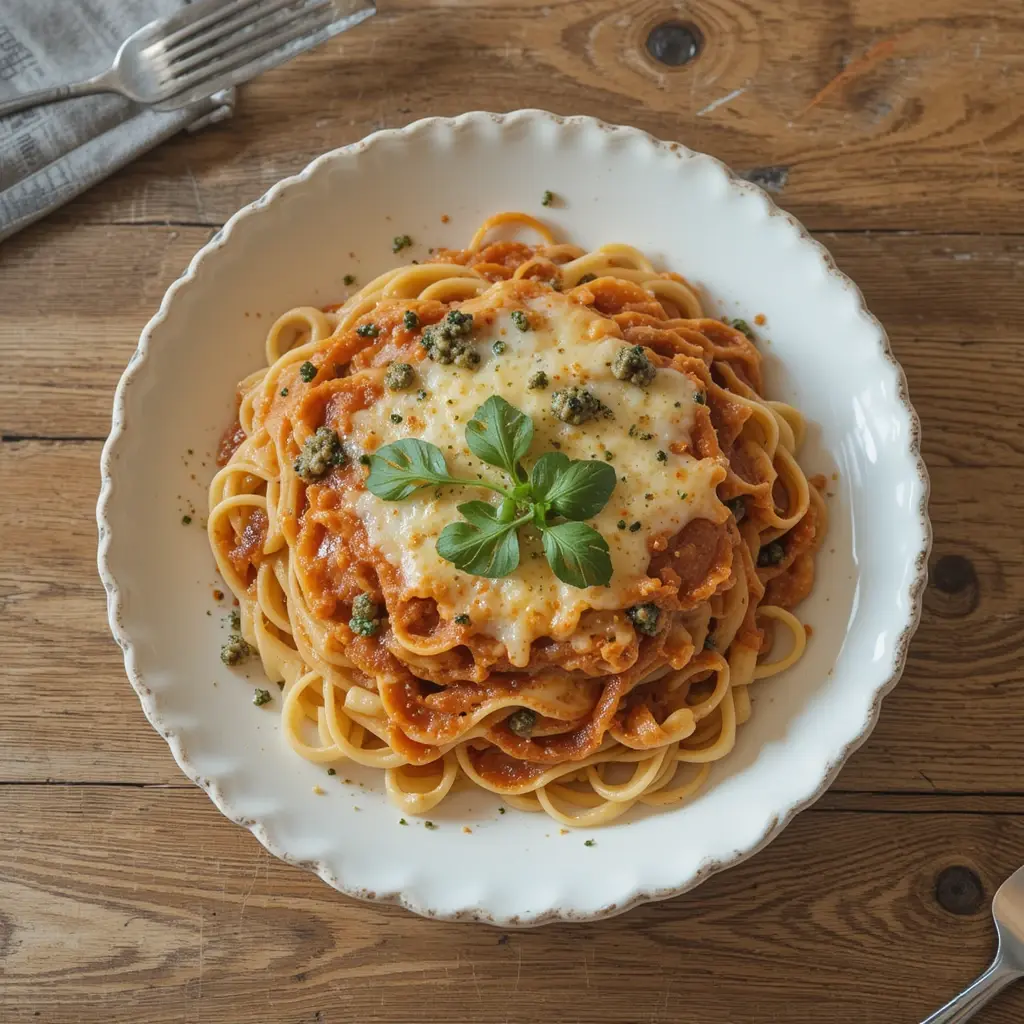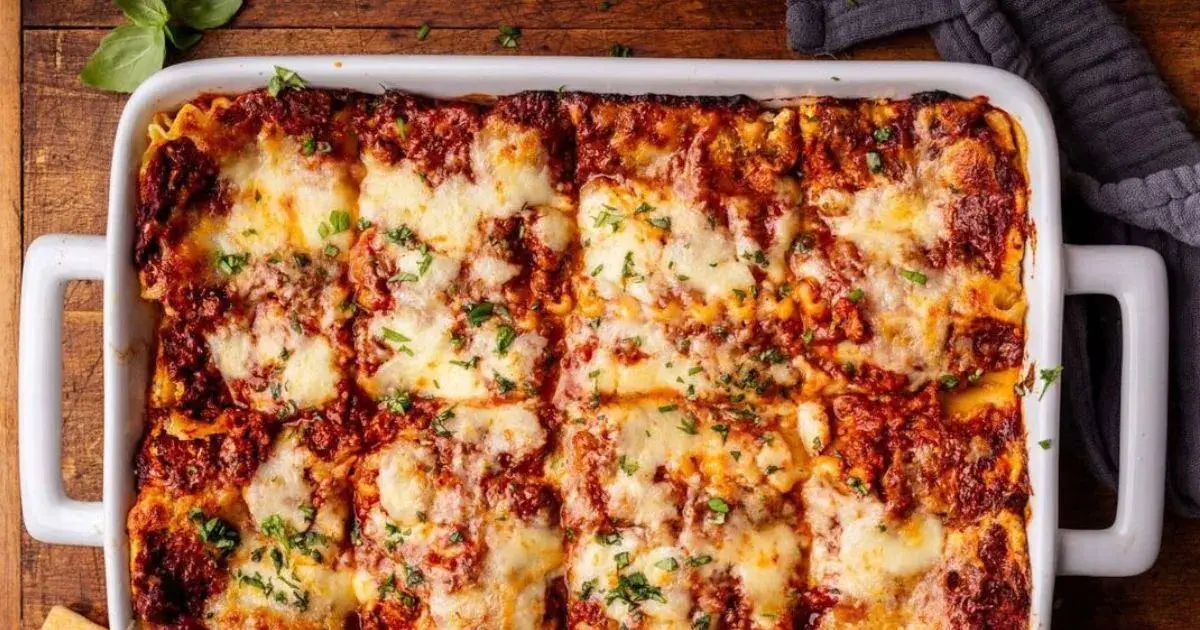Table of Contents
Lasagna Noodle Recipe Homemade : Fresh Pasta Made Easy
Introduction
Making pasta from scratch, especially a Homemade Lasagna Noodle Recipe, is a culinary journey that combines tradition and creativity. Not only does it bring a layer of warmth and authenticity to your meal, but it also allows you to take pride in every single bite. To begin with,, crafting fresh lasagna noodles ensures your dish has that irresistible melt-in-your-mouth texture that elevates it to restaurant-quality dining.
Furthermore, the process of rolling out your dough and cutting it into perfect sheets connects you to the art of Italian cooking, turning a simple recipe into a memorable experience. As you continue, you’ll find that fresh noodles hold sauces more beautifully, enhancing every flavor in your lasagna.
In addition to the basics, learning how to make your own noodles comes with its challenges—but it’s nothing a little practice can’t solve. For instance, if your dough feels too sticky or too dry, simple adjustments can make all the difference. Moreover, having the right tools, such as a rolling pin or pasta machine, makes the process smoother and more enjoyable.
By the end, you’ll not only have mastered the technique but also gained a new appreciation for the craftsmanship behind every homemade noodle. It’s about more than just food—it’s about creating a moment to savor and share with those you love.
In this article, we’ll walk you through each step, show you which ingredients you’ll need, and answer some common questions. Are you prepared to elevate your pasta-making skills?
Why Make Homemade Lasagna Noodle Recipe from Scratch?
If you’re wondering if making Homemade Lasagna Noodle Recipe is worth the time, here’s the honest answer: yes! Here’s why:
- Better Texture and Taste: Fresh pasta has a unique texture that beautifully absorbs flavors, making each bite richer and more satisfying.
- Control Over Ingredients: Making your own noodles allows you to use fresh, quality ingredients. Want organic or gluten-free noodles? You’re in charge.
- Fun and Cost-Effective: Not only does homemade pasta cost less than most premium brands, but it’s also a fun process. Kids can help with mixing and cutting, making it a family-friendly dinner activity.
Essential Tools for Making Homemade Lasagna Noodles
While you don’t need high-tech equipment, a few simple tools will make the process smoother.
- Rolling Pin or Pasta Machine: You can go traditional with a rolling pin or opt for a pasta machine to save effort. Both yield fantastic results.
- Mixing Bowls and Bench Scraper: Mixing bowls for combining ingredients and a bench scraper for dough management.
- Flour Sifter and Kitchen Scale: A sifter ensures lump-free flour, while a kitchen scale gives accurate measurements—a must for consistent results.
Each tool plays a role in ensuring your dough has the ideal texture for perfectly smooth lasagna noodles.
Ingredients for Homemade Lasagna Noodles
Here’s a basic recipe for making fresh Homemade Lasagna Noodle Recipe. You can adjust quantities based on how many noodles you want to make.
| Ingredient | Quantity | Notes |
| All-purpose flour | 2 cups | Substitute with semolina or gluten-free flour if desired |
| Eggs | 2 large | Room temperature for better incorporation |
| Salt | 1/2 tsp | Adds flavor to the dough |
| Water (optional) | 1–2 tbsp | Use if dough feels dry or needs a softer consistency |
This simple mix of flour, eggs, and salt makes tender yet durable noodles that hold up during baking.

Step-by-Step Guide to Making Lasagna Noodle Dough
Step 1: Preparing the Dough
1. Make a Flour Well:
Place the flour on a clean surface, forming a mound with a well in the center. Break the eggs into the well and sprinkle in the salt.
2. Mix and Knead:
Using a fork, whisk the eggs gently, gradually incorporating the surrounding flour. Once the mixture is less runny, use your hands to bring the dough together, kneading it for about 8–10 minutes. Kneading activates the gluten, making the dough pliable yet strong.
3. Rest the Dough:
Wrap the dough in plastic wrap or cover it with a damp cloth, then let it rest for 30 minutes. Resting helps relax the gluten, making it easier to roll out later.
Step 2: Rolling Out the Dough
Manual Rolling vs. Pasta Machine:
If you’re rolling the dough by hand, aim for even thickness—about 1/16 inch is ideal for lasagna. A pasta machine will make this easier, but either method works well as long as you achieve consistency.
Tips for Rolling Out:
- Work on a well-floured surface to prevent sticking.
- Roll from the center outwards to maintain an even thickness.
Step 3: Cutting and Shaping Homemade Lasagna Noodle Recipe
Measure and Cut:
Cut the rolled dough into sheets that fit your lasagna pan. Some prefer wider sheets, while others like thinner noodles—choose what fits your recipe.
Dust with Flour:
Lightly dust the cut noodles with flour to prevent sticking and stack them if needed.
Cooking Fresh Homemade Lasagna Noodle Recipe
With fresh noodles, you have options for cooking. Boiling and the no-boil method each offer unique advantages.
Boiling vs. No-Boil Method
- Boiling: Boil fresh noodles for 1-2 minutes to achieve an al dente texture. Remember to use a large pot with salted water, as this prevents sticking.
- No-Boil: Fresh noodles can go directly into your lasagna without boiling. However, if you choose this method, ensure your sauce is slightly more liquid to prevent the noodles from drying out during baking.
Cooking to Al Dente
Achieving the ideal lasagna starts with properly handling the noodles. Under-cooking them slightly, to an al dente texture, is crucial. This prevents the noodles from becoming overly soft during baking and ensures they hold their structure.
When draining the noodles, handle them gently to avoid tearing. Lay them flat on parchment paper to keep them from sticking, making the layering process easier and frustration-free.
While the noodles cool, prepare the other components of your lasagna, such as the sauce and cheese mixtures. Having everything ready allows for quick and seamless assembly.
Cooking noodles al dente also enables them to absorb just the right amount of moisture from the sauce during baking. This results in a perfectly textured lasagna that’s neither soggy nor dry.
Incorporating these simple but effective steps guarantees a smoother cooking experience and a more enjoyable, delicious lasagna.
Tips for Perfect Homemade Lasagna Noodle Recipe Every Time
Creating pasta noodles requires practice, but with these tips, you can get consistent, delicious results.
- Flour the Surface: Dust your working surface, rolling pin, and pasta machine with flour to avoid stickiness.
- Kneading and Resting Patience: Both steps are essential for smooth dough; don’t rush them.
- Storing Noodles: If making noodles ahead of time, refrigerate them for up to 2 days or freeze with parchment between each layer.
Following these tips helps you get perfect noodles each time.
Common Issues and Troubleshooting
Even with a simple recipe, some issues may arise. Here’s how to troubleshoot them:
- Dry or Crumbly Dough: If the dough is too dry, add a small amount of water. This often happens when flour measurements vary or if humidity is low.
- Sticky Dough: Too sticky? Dust with flour but add it gradually to avoid creating a dense dough.
- Uneven Thickness: Rolling evenly can be tricky. If using a pasta machine, adjust settings gradually to ensure even thickness.
Addressing these issues will ensure smooth, flexible noodles ready for layering.
FAQ About Homemade Lasagna Noodle Recipe
Can I make Homemade Lasagna Noodle Recipe without a pasta machine?
Absolutely! A rolling pin works perfectly fine, though it may take a bit more effort. Rolling thin and even is key to achieving restaurant-quality pasta.
How should I store unused lasagna noodles?
Uncooked noodles keep well in the fridge for up to 2 days or in the freezer for up to 2 months. Separate layers with parchment paper to prevent sticking.
Can I make lasagna noodles gluten-free?
Yes, you can! Substitute gluten-free flour in place of regular flour. You may need to adjust the water content slightly for the best consistency.
Do homemade noodles need pre-cooking before layering?
If you like, you can skip boiling and layer directly, especially if your sauce has a bit more liquid. Pre-cooking, however, is often recommended to keep a firm structure in the final dish.
Conclusion
Making lasagna noodles from scratch may seem intimidating at first, but once you try it, you’ll see it’s well worth the effort. Fresh noodles transform any lasagna, adding an authentic touch that you simply won’t get with store-bought versions. From selecting quality ingredients to learning the techniques of rolling and cutting, you’ve now got everything you need to make restaurant-quality lasagna noodles right at home. So next time you’re craving lasagna, skip the dried pasta and give homemade noodles a try. Each bite will be a testament to your time, care, and commitment to culinary excellence.
Try this homemade lasagna noodle recipe today, and discover how fresh pasta elevates your entire dish.

